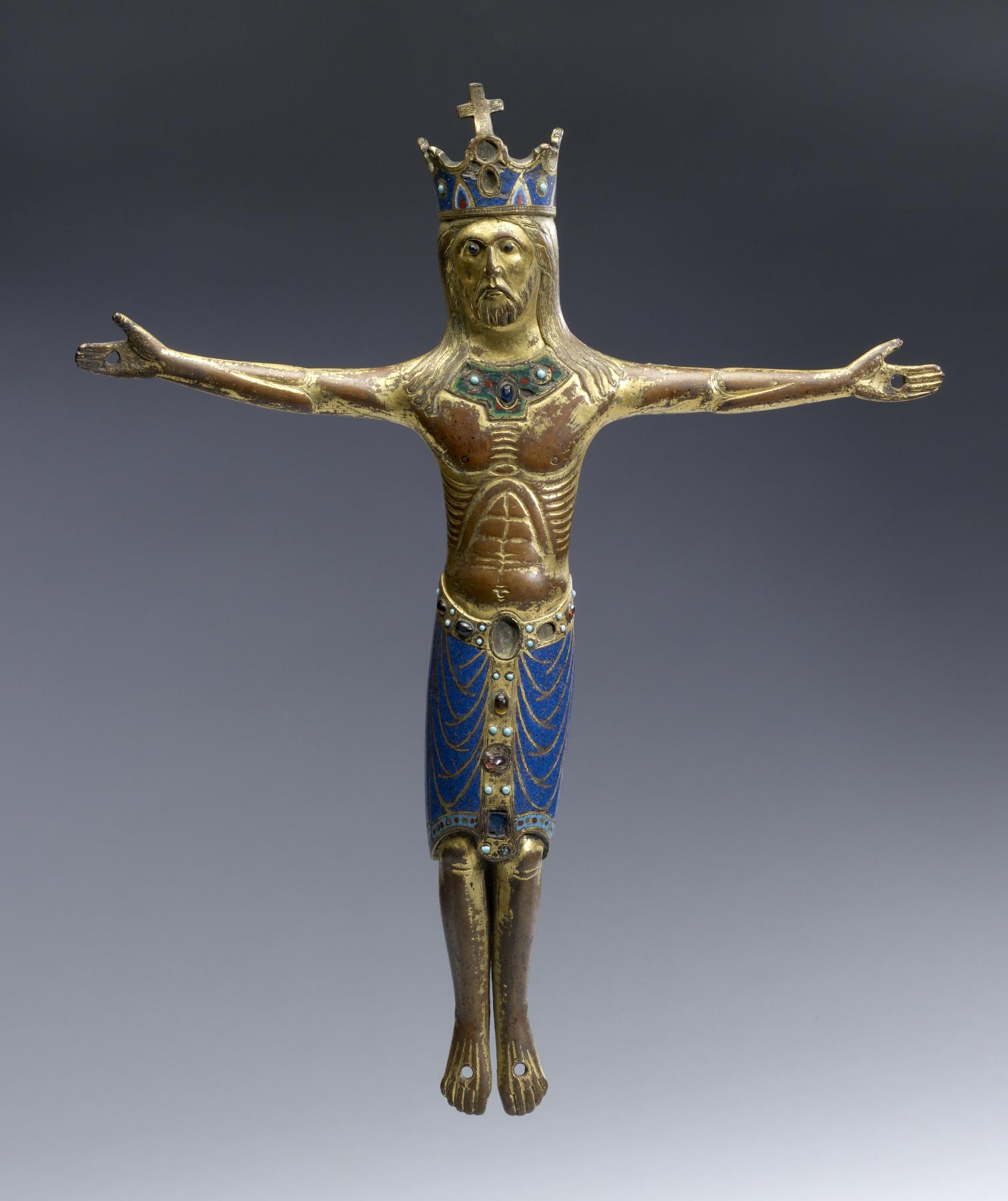Figure of Christ from a Crucifix
(Medieval Europe )
This figure of the crucified Christ was once attached to an enameled cross (now lost). The Savior is portrayed alive, symbolizing his triumph over death. His direct gaze and stiff body posture signal his divine nature. A long loincloth covering Christ's mid-section is lavishly decorated with bands of glass beads imitating precious stones, which also appear around his neck. These decorative bands, known as orphreys, were usually worn by monarchs or clerics; they are used here to indicate Christ's identity as the supreme ruler. Large metal crucifixes of this type were produced to adorn the altars of churches in central France.
Provenance
Provenance (from the French provenir, 'to come from/forth') is the chronology of the ownership, custody, or location of a historical object. Learn more about provenance at the Walters.
Jacques Seligmann, Paris [date of acquisition unknown], by purchase; Henry Walters, Baltimore, 1911, by purchase; Walters Art Museum, 1931, by bequest.
Exhibitions
| 2008-2009 | Realms of Faith: Medieval and Byzantine Art from the Walters Art Museum. Museum of Biblical Art, New York; Colby College Museum of Art, Waterville; Joslyn Art Museum, Omaha. |
| 2002-2005 | Realms of Faith: Medieval and Byzantine Art from the Walters Art Museum. Frist Center for the Visual Arts, Nashville. |
| 2001-2002 | Realms of Faith: Medieval and Byzantine Art from the Walters Art Museum. Frist Center for the Visual Arts, Nashville. |
Conservation
| Date | Description | Narrative |
|---|---|---|
| 5/8/2015 | Examination | Examined for exhibition |
| 5/8/2015 | Examination | The Christ figure is hammered from thick copper sheet. Hammer marks are easily visible on the reverse. The crown and legs were made separately and secured with rivets and heat. The inlaid eyes and cabochons on the crown, orphrey and drape are all made of colored transparent and opaque glass. The surface has residue of a dark brown waxy material (not original) that fills some of the recesses and engraved lines. |
Geographies
France, Limoges (Place of Origin)
Measurements
H: 12 5/8 x W: 10 5/8 in. (32 x 27 cm)
Credit Line
Acquired by Henry Walters, 1911
Location in Museum
Accession Number
In libraries, galleries, museums, and archives, an accession number is a unique identifier assigned to each object in the collection.
In libraries, galleries, museums, and archives, an accession number is a unique identifier assigned to each object in the collection.
44.228


